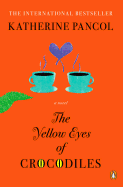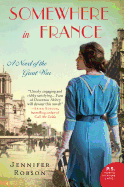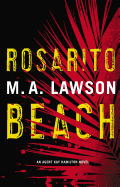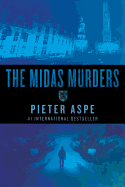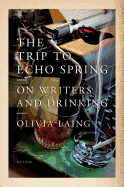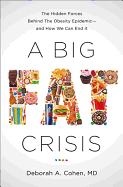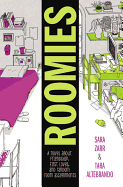Happy National Sleep Day!
"I cannot sleep unless I am surrounded by books." --Jorge Luis Borges
Although its origins are cloaked in mystery (one theory is that it was a natural counterpoint to the frantic holiday season), National Sleep Day occurs annually today, January 3. So why are you still awake? If you'd like a few sleep-themed books for a celebratory voyage to "The Land of Counterpane," we have some suggestions.
You might start with The Art of Lying Down: A Guide to Horizontal Living by Bernd Brunner (translated by Lori Lantz), a "study of the history of lying down--which is more complicated than you might think."
Penelope A. Lewis, author of In The Secret World of Sleep: The Surprising Science of the Mind at Rest, told NPR earlier this year that sleep may be your brain's "spring cleaning" mechanism: "You clean up after you've made a mess, right? So that's exactly what sleep seems to do for the brain."
Bedtime reading possibilities are endless for drowsy children of all ages, ranging from prescriptive self-help titles to entertaining options like Go the F**k to Sleep by Adam Mansbach and Ricardo Cortés, Einstein's Dreams by Alan Lightman, The House of Sleep by Jonathan Coe or even Dr. Sleep by Stephen King, though the last one might not be the ideal sleep aid.
My selection for National Sleep Day this year is Edward Bellamy's Looking Backward, in which Julian West, the insomniac protagonist, enters his favorite room--a hermetically sealed, subterranean sleeping chamber--in 1887 and, under a mesmerist's spell, wakes up in the year 2000. Now that is a good night's literary sleep by any standard.
Since the Weather Channel is predicting -13 temps for tonight, concepts like spring cleaning, hibernation, reading under the covers and a little restorative snoozing all sound like the perfect ingredients for a successful holiday. Happy National Sleep Day! --Robert Gray, contributing editor
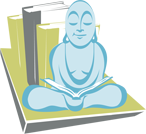


 The best soccer book ever written just got better. Nation Books has published an updated version of Eduardo Galeano's Soccer in Sun and Shadow ($16.99, trade paper) that now includes his writing on the 2006 and 2010 World Cups. The book is a series of vignettes, a chain of stories, that cover the history of the sport through players, coaches, matches and goals. Those stories are framed by current events, politics, globalization, racism and commercialism. Galeano has said he wrote the book to enable "fans of reading to lose their fear of soccer and fans of soccer to lose their fear of books."
The best soccer book ever written just got better. Nation Books has published an updated version of Eduardo Galeano's Soccer in Sun and Shadow ($16.99, trade paper) that now includes his writing on the 2006 and 2010 World Cups. The book is a series of vignettes, a chain of stories, that cover the history of the sport through players, coaches, matches and goals. Those stories are framed by current events, politics, globalization, racism and commercialism. Galeano has said he wrote the book to enable "fans of reading to lose their fear of soccer and fans of soccer to lose their fear of books."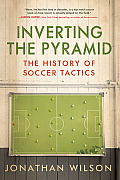 To understand Inverting The Pyramid: The History of Soccer Tactics by Jonathan Wilson (Nation Books, $18.99, paperback), you do need to know soccer. Actually, you have to be a bit of a soccer geek to work your way through these 400-plus pages of the history of soccer tactics. You might have heard of the 4-4-2 formation, but the 4-6-0 or the 1-3-3-3? Makes the mind twitch. The book, originally published in the U.K., has been updated and adapted for the U.S. market.
To understand Inverting The Pyramid: The History of Soccer Tactics by Jonathan Wilson (Nation Books, $18.99, paperback), you do need to know soccer. Actually, you have to be a bit of a soccer geek to work your way through these 400-plus pages of the history of soccer tactics. You might have heard of the 4-4-2 formation, but the 4-6-0 or the 1-3-3-3? Makes the mind twitch. The book, originally published in the U.K., has been updated and adapted for the U.S. market. The oddest new book might be Those Feet: A Sensual History of English Soccer by David Winner (Overlook, $15.95, paperback), on how the English style of football, with deep roots in Victorian values and sexual anxiety, has created a modern neurosis for British football. For example, in the mid-19th century, John Charles Thring was influential in developing codes of football. His brother Edward Thring was important in Victorian education and obsessed with stamping out masturbation, which connects with William Acton's concept of "spermatic economy" in developing strong, focused young footballers. I guess that's about all I want to say about that.
The oddest new book might be Those Feet: A Sensual History of English Soccer by David Winner (Overlook, $15.95, paperback), on how the English style of football, with deep roots in Victorian values and sexual anxiety, has created a modern neurosis for British football. For example, in the mid-19th century, John Charles Thring was influential in developing codes of football. His brother Edward Thring was important in Victorian education and obsessed with stamping out masturbation, which connects with William Acton's concept of "spermatic economy" in developing strong, focused young footballers. I guess that's about all I want to say about that.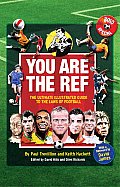 The most fun of the recent crop of titles is You Are the Ref: The Ultimate Illustrated Guide to the Laws of Football by Paul Trevillion and Keith Hackett, with a foreword by Howard Webb (Overlook, $15.95, paperback), probably the most recognizable referee in the sport. A cousin to the Guardian comic strip that poses a match situation on Friday, with official answers on Mondays, the book is a collection of guidelines and advice, rules and scenarios for referees. There are the 6Cs of refereeing, which remind me of the 5D's of Dodgeball (stupid movie reference). My favorite section is on how to detect simulation--diving to the ground and feigning injury to draw a foul. If you want to see examples of flagrant diving, go to YouTube and search Arjen Robben or Cristiano Ronaldo.
The most fun of the recent crop of titles is You Are the Ref: The Ultimate Illustrated Guide to the Laws of Football by Paul Trevillion and Keith Hackett, with a foreword by Howard Webb (Overlook, $15.95, paperback), probably the most recognizable referee in the sport. A cousin to the Guardian comic strip that poses a match situation on Friday, with official answers on Mondays, the book is a collection of guidelines and advice, rules and scenarios for referees. There are the 6Cs of refereeing, which remind me of the 5D's of Dodgeball (stupid movie reference). My favorite section is on how to detect simulation--diving to the ground and feigning injury to draw a foul. If you want to see examples of flagrant diving, go to YouTube and search Arjen Robben or Cristiano Ronaldo.